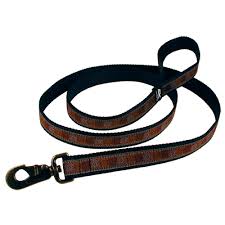
记忆方法
将“leash”与“lead”结合记忆,想象一条“lead”的线(lead作为动词也意味着引导),这根线被用来控制或束缚(leash)一只动物,从而形成对“leash”的含义——皮带、链条等,用于束缚或引导。
以上内容由AI生成, 仅供参考和借鉴
中文词源
leash 牵狗用的皮带,绳索
来自古法语laisse,松开,皮带,词源同lease,lax.即把狗松开,给予狗部分自由,用来指牵狗的皮带,后词义通用化。
英语词源
- leash (v.)
- "to attach to or with a leash," 1590s, from leash (n.). Related: Leashed; leashing.
- leash (n.)
- "thong for holding a dog or hound," c. 1300, from Old French laisse "hound's leash," from laissier "loosen," from Latin laxare, from laxus "loose" (see lax). Figurative sense attested from early 15c. The meaning "a set of three" is from early 14c., originally in sporting language.
权威例句
- 1. All dogs must be kept on a leash in public places.
- 在公共场所所有的狗必须用皮带牵住。
- 2. I reached for the leash, but the dog got in between.
- 我伸手去拿系狗绳, 但被狗挡住了路.
- 3. The dog strains at the leash, eager to be off.
- 狗拼命地扯拉皮带, 想挣脱开去.
- 4. One Sunday he began trying to teach the two puppies to walk on a leash.
- 一个星期天,他开始尝试训练两只小狗系上皮带走路。
- 5. The dog yelped excitedly when his master opened a desk drawer and produced his leash.
- 主人打开抽屉拿出牵狗用的皮带时,狗兴奋地叫了起来。